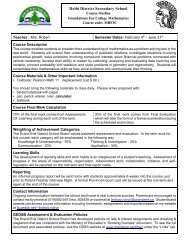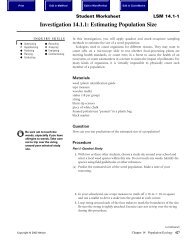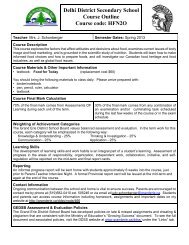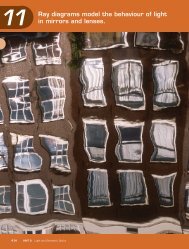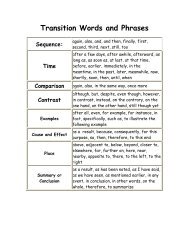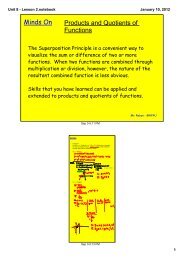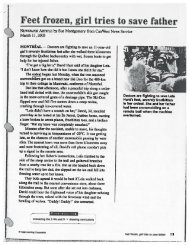Chapter 4.pdf
Chapter 4.pdf
Chapter 4.pdf
You also want an ePaper? Increase the reach of your titles
YUMPU automatically turns print PDFs into web optimized ePapers that Google loves.
4.1<br />
Investigating Matter<br />
Here is a summary of what you<br />
will learn in this section:<br />
• Matter has mass and occupies<br />
volume.<br />
• Matter is composed of<br />
particles. The arrangement and<br />
movement of the particles<br />
determines whether a<br />
substance is solid, liquid, or<br />
gas.<br />
• Matter can be classified as a<br />
pure substance or a mixture.<br />
• Mixtures can be further<br />
classified as mechanical<br />
mixtures, suspensions, and<br />
solutions.<br />
Figure 4.1 Fireworks displays combine art and chemistry.<br />
Figure 4.2 Fireworks are lit with a<br />
flame.<br />
The Chemistry of Fireworks<br />
On Canada Day, when darkness falls, the skies of towns and<br />
cities across the country come alive with colours and sounds.<br />
Flares of red, blue, green, and white are joined by cracks and<br />
bangs as fireworks displays mark Canada’s national day of<br />
celebration (Figure 4.1). Fireworks are an ancient technology,<br />
first invented in China over 2000 years ago. Today, fireworks can<br />
be seen around the world and creating them is an art form called<br />
pyrotechnics. Pyrotechnics is a branch of chemistry, the science<br />
concerned with understanding and changing matter.<br />
The spectacular sights, sounds, and smells of fireworks come<br />
from the fusion of science and art. The designers of fireworks<br />
know that some substances burn with brilliant colours when<br />
heated (Figure 4.2). Aluminum metal is used in the kitchen as<br />
cooking foil. However, when aluminum is heated by an explosion,<br />
the metal burns with a bright white flame. To use aluminum in<br />
fireworks, it is first made into a powder so that it will burn<br />
quickly and spread out easily. The types of fireworks that light up<br />
the night sky or leave a thick glowing trail of light often contain<br />
aluminum.<br />
136 UNIT B Atoms, Elements, and Compounds



